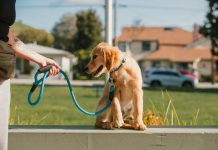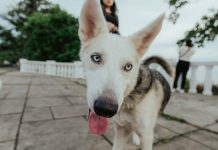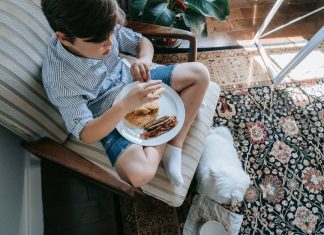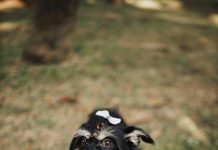Welcoming a new puppy into your home is a joyous occasion filled with love, laughter, and a few inevitable challenges. One common hurdle that many new pet owners face is puppy biting—a natural behavior that, if left unchecked, can lead to more serious issues down the line. Fortunately, with patience and the right techniques, you can guide your furry friend towards more appropriate ways of interacting. In this article, we’ll explore simple yet effective training methods to prevent puppy biting, ensuring a harmonious relationship between you and your four-legged companion. Embrace this journey with warmth and understanding, as you lay the foundation for a lifetime of happy, bite-free moments.
Understanding Why Puppies Bite and How It Affects Their Growth
Puppy biting is a natural behavior that stems from their developmental phase, where they explore the world with their mouths. Understanding this instinct is crucial as it directly impacts their growth and learning. Puppies bite for several reasons, including teething discomfort, playfulness, or simply to communicate their needs. This behavior, while normal, can become problematic if not properly addressed, potentially leading to behavioral issues as they mature. Ensuring that your puppy learns appropriate boundaries is essential for their social development and helps prevent future aggressive behavior.
To effectively manage and reduce biting, consider implementing these simple training techniques:
- Redirect their attention: Offer chew toys or treats whenever your puppy begins to bite, helping them associate biting with acceptable objects.
- Socialize early: Introduce your puppy to various environments, people, and other animals to develop their social skills and reduce anxiety-driven biting.
- Use positive reinforcement: Reward your puppy with praise or treats for gentle play, reinforcing non-biting behavior.
- Be consistent: Establish clear rules and maintain them, ensuring everyone in the household follows the same guidelines.
By addressing biting early with these methods, you are setting the foundation for a well-adjusted and happy dog, ultimately supporting their growth into a balanced adult.
Creating a Safe and Structured Environment for Your Puppy
A well-structured environment is key to helping your puppy learn boundaries and reduce biting tendencies. Start by designating specific areas in your home where your puppy can play and explore safely. Use baby gates or playpens to create these zones, which should be free from valuable items and potential hazards. This not only keeps your puppy safe but also minimizes stress by reducing the number of places where they might get into trouble.
Consider the following tips to enhance this environment:
- Provide plenty of chew toys: Ensure your puppy has a variety of textures and sizes to explore. This redirects their need to bite onto appropriate objects.
- Maintain a consistent schedule: Regular feeding, play, and rest times help your puppy understand what to expect and when, which reduces anxiety-driven biting.
- Engage in supervised play: Spend time interacting with your puppy using toys rather than hands, teaching them that hands are not for biting.
By establishing a secure and predictable environment, you create a foundation for your puppy to thrive and learn more easily, curbing their natural instinct to nip and bite.

Effective Training Techniques to Redirect Biting Behavior
Redirecting a puppy’s biting behavior can be both a rewarding and essential part of their training. To guide your furry friend towards gentler play, consider these effective techniques:
- Consistent Redirection: When your puppy starts to bite, offer them a chew toy instead. This teaches them that toys, not hands or feet, are for biting. Consistency is key, so ensure everyone in the household follows this rule.
- Use Positive Reinforcement: Praise and reward your puppy when they play nicely. Positive reinforcement encourages good behavior and helps them understand what is expected.
- Socialization: Regular playdates with other puppies can teach your pet bite inhibition naturally. Puppies learn a lot from their peers, and this interaction is crucial for their development.
- Teach “Leave It” and “Drop It” Commands: These commands can be invaluable in managing your puppy’s curiosity and impulsive biting. Practice regularly with treats to reinforce these commands.
Remember, patience and persistence are vital. With the right approach, your puppy will learn to redirect their biting, making playtime enjoyable for everyone involved.

Encouraging Positive Reinforcement and Consistent Routines
Fostering a nurturing environment for your puppy involves more than just addressing unwanted behaviors; it’s about creating a foundation of trust and understanding. Positive reinforcement is a powerful tool in teaching your puppy what is expected of them. When your puppy refrains from biting or responds well to a command, reward them immediately with treats, praise, or playtime. This immediate association helps them understand that their good behavior leads to positive outcomes.
Establishing consistent routines is equally crucial. Dogs thrive on predictability, so setting a structured schedule for feeding, playtime, and training sessions can help manage your puppy’s energy and prevent boredom-induced biting. Consider these tips to integrate consistency into your routine:
- Maintain regular feeding times to help regulate their energy levels.
- Incorporate short, frequent training sessions into your daily schedule.
- Dedicate specific times for interactive play to burn off excess energy.
- Use consistent commands and signals for training to avoid confusion.
By weaving positive reinforcement with a stable routine, you not only curb biting but also cultivate a harmonious relationship with your furry friend.
In Summary
guiding your puppy away from biting is a journey that requires patience, consistency, and a gentle touch. By implementing the simple training techniques we’ve discussed, you can nurture a bond built on trust and understanding. Remember, every puppy learns at their own pace, so celebrate the small victories along the way. With your loving guidance, your furry friend will grow into a well-mannered companion. Keep fostering a positive environment, and enjoy the rewarding process of raising a happy, bite-free puppy. Thank you for taking the time to invest in your pup’s future—your dedication will pave the way for countless joyful moments together.
















